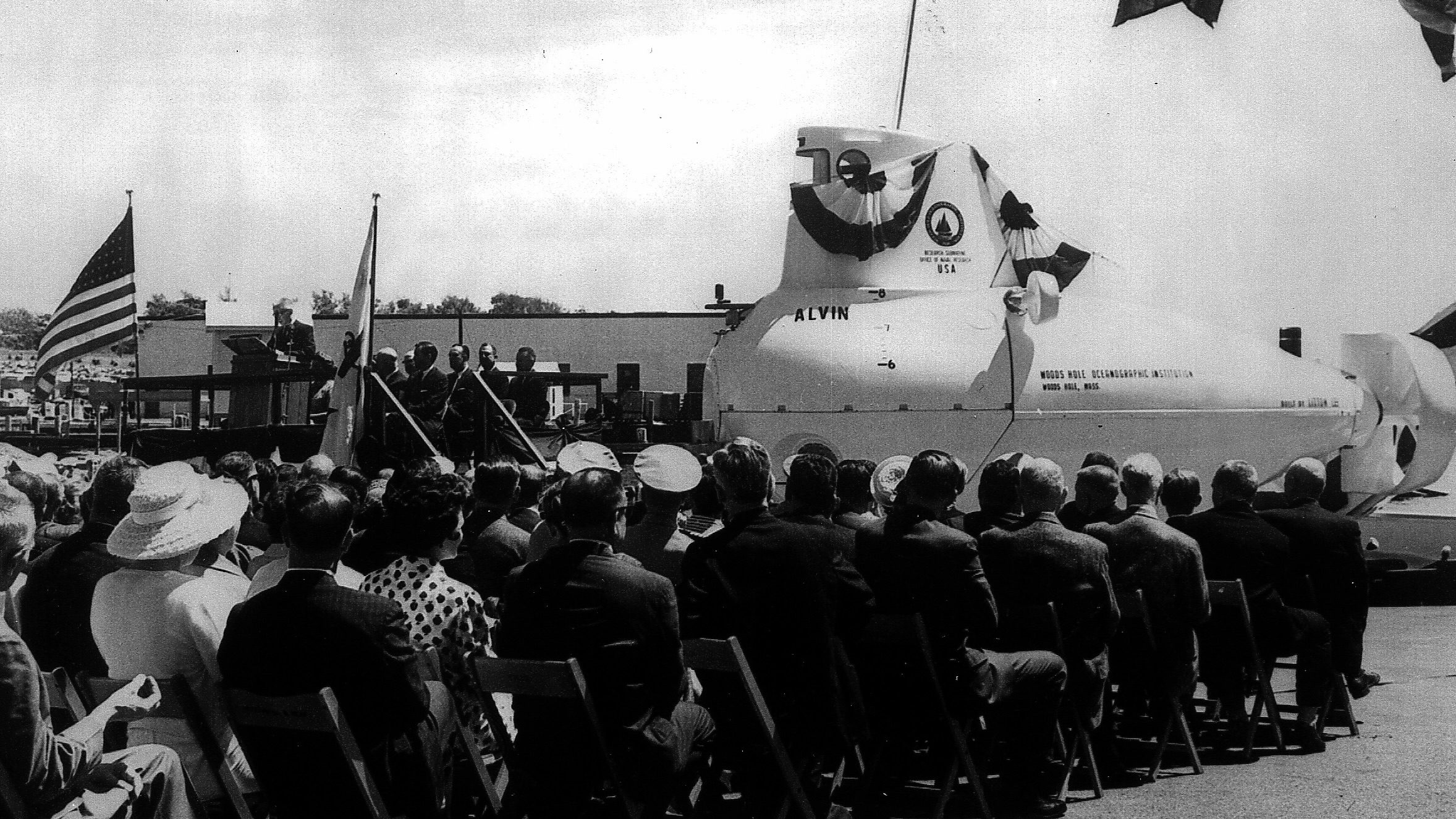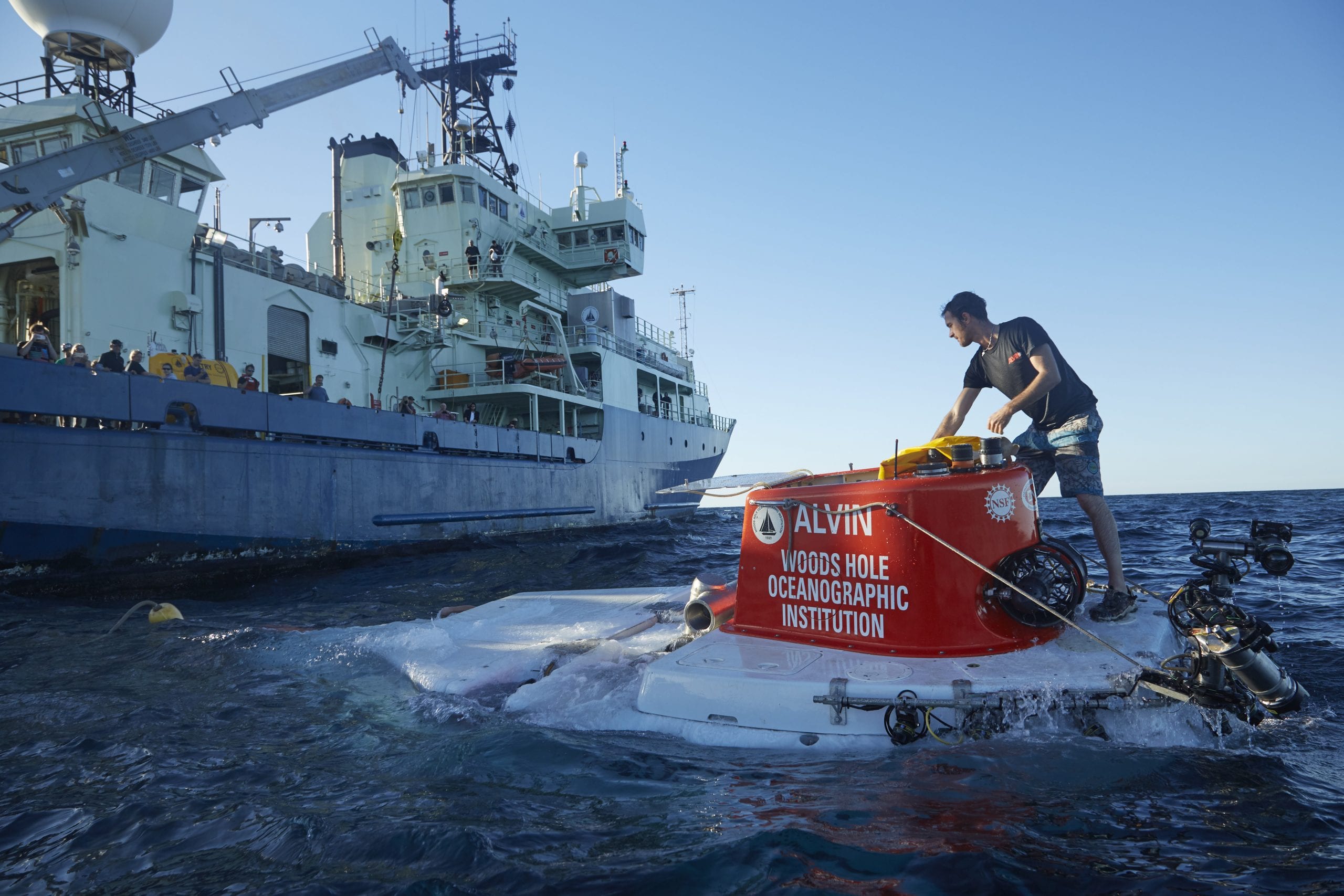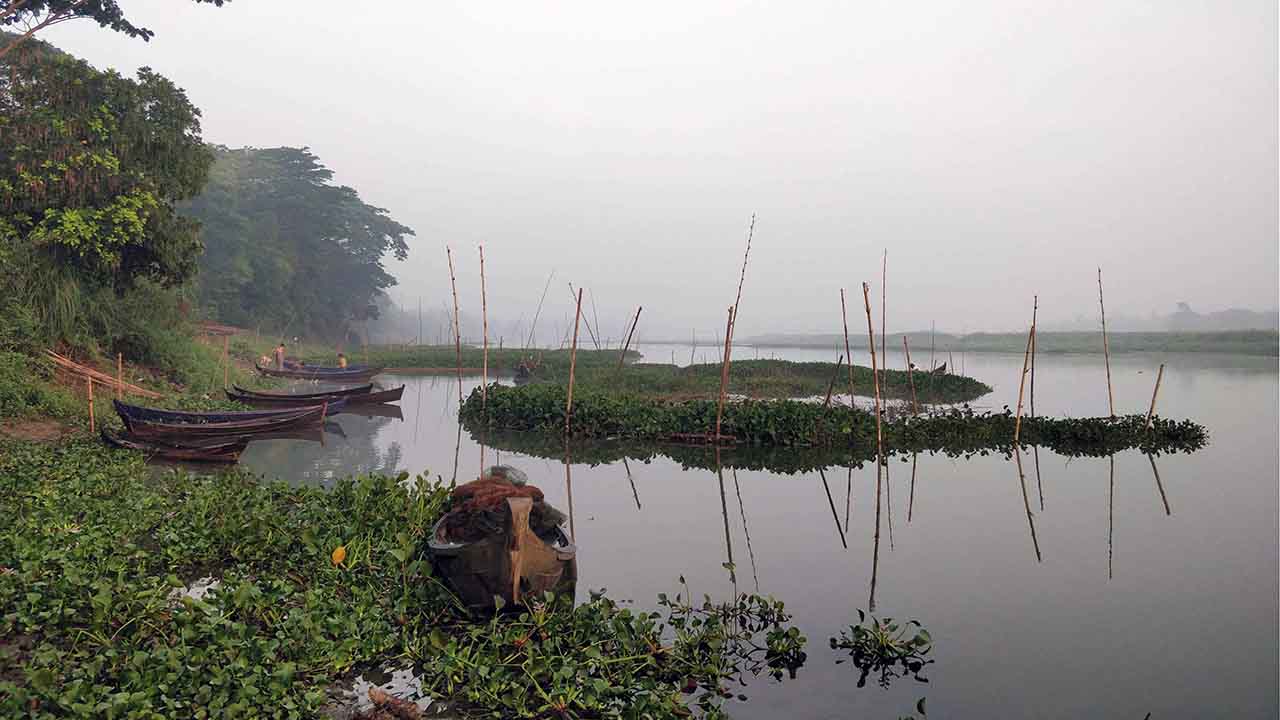News Releases
Scientific Mission Will Explore One of the Deepest Ocean Trenches
An international team of researchers led by deep-sea biologist Tim Shank of the Woods Hole Oceanographic Institution (WHOI) will use the world’s only full-ocean depth, hybrid remotely operated vehicle, Nereus, and other advanced technology to explore life in the depths of the Kermadec Trench.
Read MoreSixty Years of Deep Ocean Research, Exploration, and Discovery with Human-Occupied Vehicle Alvin
In June 1964, the world’s first deep-diving submersible dedicated to scientific research was commissioned. What have we learned over the past 60 years?
Read MoreExplorer and Filmmaker James Cameron Gives DEEPSEA CHALLENGER Sub to Woods Hole Oceanographic Institution
Explorer and filmmaker James Cameron and Woods Hole Oceanographic Institution (WHOI) have formed a partnership to stimulate advances in ocean science and technology and build on the historic breakthroughs of the 2012 […]
Read MoreWHOI Researchers, Collaborators Receive $1.4 Million to Study Life in Ocean’s Greatest Depths
Scientists from the Woods Hole Oceanographic Institution (WHOI), University of Hawaii, Whitman College and international colleagues will conduct the first systematic study of life in the deepest marine habitat on […]
Read MoreHybrid Remotely Operated Vehicle Nereus Reaches Deepest Part of the Ocean
A new type of deep-sea robotic vehicle called Nereus has successfully reached the deepest part of the world’s ocean, reports a team of U.S. engineers and scientists aboard the research […]
Read MoreNew Hybrid Vehicle Will Enable U.S. Scientists to Reach Deepest Parts of the World Ocean Floor
For the first time since 1960, US scientists will be able to explore the deepest parts of the world’s oceans, up to seven miles below the surface, with a novel underwater vehicle capable of performing multiple tasks in extreme conditions. Researchers at the Woods Hole Oceanographic Institution (WHOI) are developing a battery-powered underwater robot to enable scientists to explore the ocean’s most remote regions up to 11,000 meters (36,000-feet) deep.
Read MoreRobotic Deep-sea Vehicle Lost on Dive to 6-Mile Depth
On Saturday, May 10, 2014, at 2 p.m. local time (10 pm Friday EDT), the hybrid remotely operated vehicle Nereus was confirmed lost at 9,990 meters (6.2 miles) depth in the Kermadec Trench northeast of New Zealand. The unmanned vehicle was working as part of a mission to explore the ocean’s hadal region from 6,000 to nearly 11,000 meters when a portion of it likely imploded.
Read More
WHOI Welcomes Explorer and Director James Cameron and the DEEPSEA CHALLENGER
On Friday, June 14, filmmaker James Cameron delivered the DEEPSEA CHALLENGER, the only human-occupied vehicle currently able to access the deepest parts of the ocean, to Woods Hole Oceanographic Institution. […]
Read MoreWHOI Engineers Develop and Test New Underwater High-Speed Wireless Communication System
Engineers from the Woods Hole Oceanographic Institution (WHOI) have developed a new wireless underwater communication system to control remotely operated vehicles (ROVs) in real time. This new method may eliminate […]
Read MoreMass. Governor Deval Patrick Makes First Visit to WHOI
The Woods Hole Oceanographic Institution (WHOI) hosted a visit Wednesday, October 12, by Massachusetts Governor Deval Patrick, marking his first visit to the Cape-based non-profit ocean research, engineering, and education […]
Read MoreWHOI Marine Chemist Shares Hard Won Advice for Communicating in the Face of Environmental Disasters
Science Communications in a Crisis: An Insider’s Guide draws on decades of experience
Read MoreWHOI reveals upgrades to iconic submersible Alvin
One of the world’s most prolific research submersibles will put 99% of the ocean floor within reach of science community when it relaunches in 2021
Read MoreGeologic History of Ayeyawady River Delta Mapped for the First Time
The Ayeyawady River delta in Myanmar is home to millions of people, and is a hub of agricultural activity. Unlike other large rivers across the world, however, the Ayeyawady has been relatively untouched by large infrastructure and dam projects for the past 50 years, and its geologic evolution has never previously been studied.
Read MoreMarine Archaeologists Excavate Greek Antikythera Shipwreck
Archaeologists excavating the famous ancient Greek shipwreck that yielded the Antikythera mechanism have recovered more than 50 items including a bronze armrest (possibly part of a throne), remains of a bone flute, fine glassware, luxury ceramics, a pawn from an ancient board game, and several elements of the ship itself.
“This shipwreck is far from exhausted,” reports project co-Director Dr. Brendan Foley, a marine archaeologist with the Woods Hole Oceanographic Institution (WHOI). “Every single dive on it delivers fabulous finds, and reveals how the ‘1 percent’ lived in the time of Caesar.”
The shipwreck dates to circa 65 B.C., and was discovered by Greek sponge fishermen in 1900 off the southwestern Aegean island of Antikythera. They salvaged 36 marble statues of mythological heroes and gods; a life-sized bronze statue of an athlete; pieces of several more bronze sculptures; scores of luxury items; and skeletal remains of crew and passengers. The wreck also relinquished fragments of the world’s first computer: the Antikythera Mechanism, a geared mechanical device that encoded the movements of the planets and stars and predicted eclipses.
The 2015 expedition is part of a long-term research program at the site, which began in 2014. It was the first scientific excavation of the wreck, and launched the first comprehensive study of all of its artifacts. During the new multi-year program the team expects to recover artifacts and ancient artwork still buried in the seafloor, and recreate the history of the ship’s exquisite cargo and its final voyage.
Read MoreSOI Collaborating with WHOI on World’s Most Advanced Deep-diving Robotic Vehicle
Schmidt Ocean Institute (SOI) has begun working with the Deep Submergence Laboratory at the Woods Hole Oceanographic Institution (WHOI) to design and build the world’s most advanced robotic undersea research vehicle for use on SOI’s ship Falkor. The new vehicle will be capable of operating in the deepest known trenches on the planet, including the nearly 11,000-meter-deep Challenger Deep in the Mariana Trench. The design will capitalize on lessons learned from past WHOI vehicle designs, as well as advanced technologies developed for DEEPSEA CHALLENGER, the submersible and science platform that explorer and director James Cameron piloted to Challenger Deep in 2012 and donated to WHOI in 2013.
Read MoreClimate Change Led to Collapse of Ancient Indus Civilization, Study Finds
A new study combining the latest archaeological evidence with state-of-the-art geoscience technologies provides evidence that climate change was a key ingredient in the collapse of the great Indus or Harappan Civilization almost 4000 years ago. The study also resolves a long-standing debate over the source and fate of the Sarasvati, the sacred river of Hindu mythology.
Read MoreMajor Caribbean Earthquakes and Tsunamis a Real Risk
A dozen major earthquakes of magnitude 7.0 or greater have occurred in the Caribbean near Puerto Rico, the U.S. Virgin Islands and the island of Hispaniola, shared by Haiti and […]
Read MoreDeeper-Diving Human Occupied Submersible to Replace Alvin
Arlington, VA –After 40 years of scientific research that led to the discovery of new life forms, helped confirm the theory of plate tectonics, and enthralled schoolchildren around the world […]
Read More




